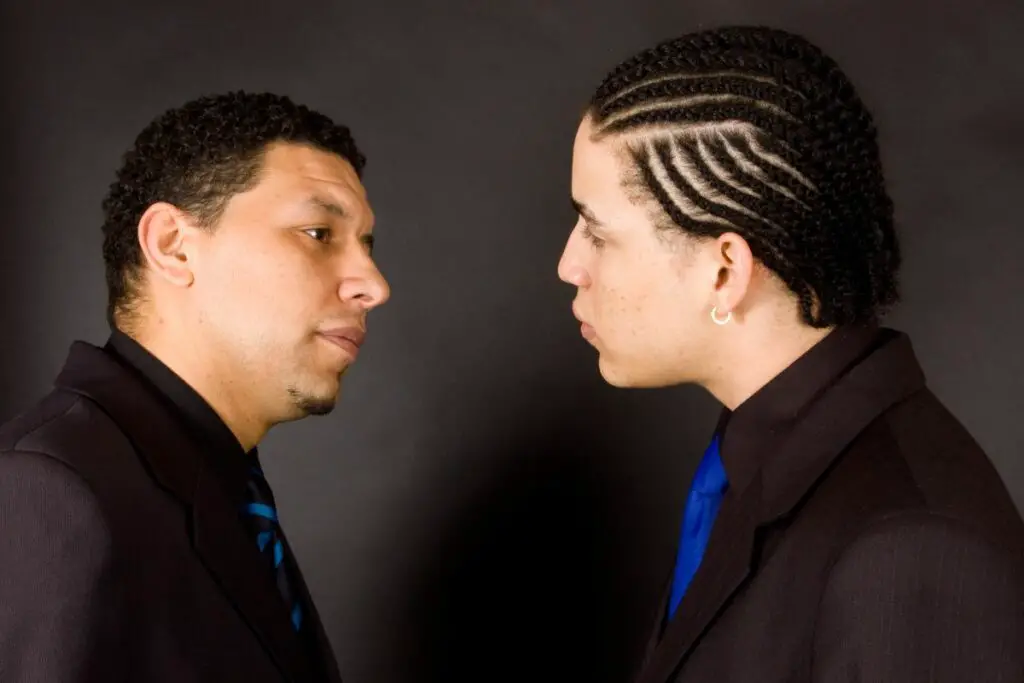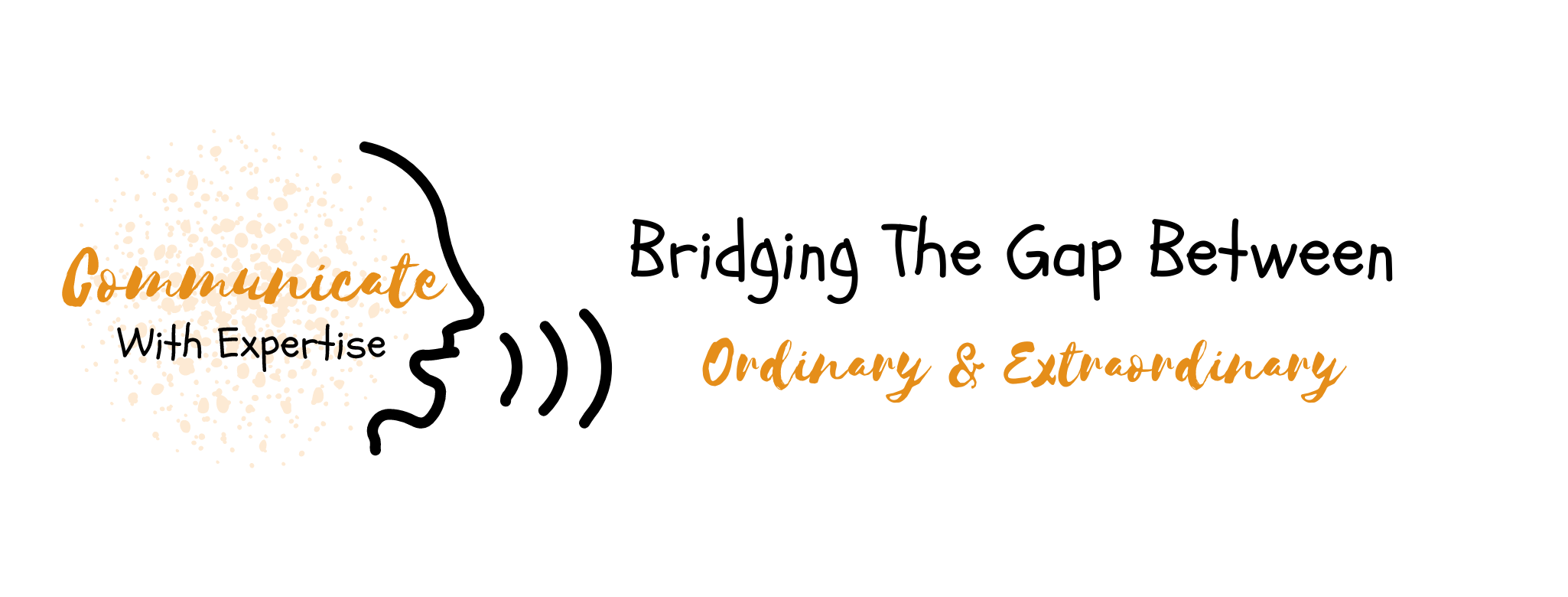Paying attention to body language can help you to avoid misunderstandings and miscommunications.
Throughout our daily interactions, we communicate not only through the words but also through our body language, facial expressions and other forms of nonverbal communication. While we may think that these activities are second nature, there’s actually a lot more to learn about how we convey nonverbal messages. It’s easy to misinterpret or miss important cues when it comes to nuances such as gestures and postures — if you’re not aware of them. In this blog post, I’ll discuss the main reasons for misinterpreting nonverbal communication – and what you can do about it.
Body language includes both reflexive and non-reflexive movement or a part or the whole body.
fast, 1970
There are always two elements to body language – the delivery and the reception.
Can body language be misinterpreted?
It is undeniable that body language plays a large role in communication. From our facial expressions right down to the way we walk, certain messages are being sent without saying a word. What might be interpreted as disinterest or even malice could actually be someone’s effort to hide discomfort or embarrassment.
Although it is often possible to make an educated guess, it can also be extraordinarily easy to misconstrue the nuances of unspoken cues and arrive at entirely wrong conclusions. It is essential then, when attempting to decode body language, to consider all possibilities and not hastily jump to conclusions – for misinterpretations could have serious consequences on relationships and collaborations alike.
Reasons for misinterpreting nonverbal communication
When it comes to non-verbal communication, there are often a lot of misinterpretations. This is because people tend to rely heavily on their own personal experiences and observations, rather than taking into account the different cultural norms that may be at play.
An awareness of the underlying emotions such as happiness, sadness, love, anger, fear, and disgust can improve the accuracy of interpreting body language.
For example, someone who is standing with their arms crossed may simply be cold, rather than defensive or disagreeable. It is important to consider the context in which the body language is being used before making any assumptions about what it means.
Additionally, it’s important to be aware of the potential for deception when interpreting body language. People can deliberately use body language cues to manipulate or deceive others.
For example, someone might feign interest by making lots of eye contact or nodding their head, when in reality they are not interested at all. It is important to be aware of these potential deception when interpreting body language.
Non-verbal communication includes:
ALI, 2018
- Position
- Facial expression
- Eye contact
- Touch
- Physical reactions

Non-verbal communication should:
ali, 2018
1. Aid communication
2. Prevent unconscious messages
3. Appropriately decode and react to visual cues
Here are a few reasons why non-verbal communication is often misinterpreted:
1. Cultural differences in body language
Different cultures have different norms when it comes to body language.
What may be considered polite or respectful in one culture could be seen as offensive in another. For example, in some cultures it is customary to maintain eye contact when speaking with someone, while in others averting one’s gaze is a sign of respect.
2. Focusing on personal experiences
People often base their interpretation of body language on their own personal experiences and observations.
This can lead to misunderstandings, as what may seem like a naturally occurring gesture to one person could be interpreted as something completely different by another.
3. Individual variations and sensitivities
Individuals vary in the way they use and interpret body language.
For example, some people may use a lot of hand gestures when they speak, while others may keep their hands relatively still.
Additionally, some people may naturally have a more expressive or animated way of speaking, while others tend to be more subdued.
4. Misinterpretation based on body type
Body language can be misconstrued based on the individual’s body type and the way they carry themselves
For example, someone who is tall and has a large build may be perceived as more aggressive or intimidating, even if they are not intending to come across that way.
5. Ignoring the context of the situation
The meaning of body language can vary depending on the context of the situation.
For instance, a hug may be seen as a sign of affection in one context, but as a way to assert dominance in another.
6. Reading too much into it
People can mistakenly over analyze non-verbal communication.
For example, someone may interpret a person’s crossed arms as a sign that they are closed off and uninterested, when in reality the person may just be cold or uncomfortable.
7. Deliberate manipulation of non-verbal communication
People can deliberately use body language to mislead or manipulation others.
For instance, someone may pretend to be interested in a conversation by making eye contact and nodding their head, when in reality they are not actually listening at all.
8. Lack of knowledge
And finally, body language is often misinterpreted simply because people are not aware of the many different ways it can be used and interpreted.
As a result, it’s important to always take into account the potential for misunderstanding and to always consider the context of the situation before making any assumptions.

Miscommunication between men and women
Although, miscommunication often occurs, research claims that it is even more common between men and women. Notably, this miscommunication arises from misinterpretation and not original intent. Actually, women are claimed to be more successful at decoding non-verbal cues than men.
In general, men tend to be more literal when they communicate. Consequently, they are often less likely to pick up on nonverbal cues, such as body language and tone of voice. On the other hand, women tend to be more attuned to these nonverbal cues. As a result, they may misinterpret what a man says based on his tone of voice or body language.
The most common misinterpretation is when a woman touches her hair while talking to a man. This gesture is often interpreted as a sign of flirtation, when in reality the woman might just be nervous.
To avoid miscommunication, it is important to be aware of these potential differences and to take them into account when communicating with someone of the opposite sex.
Tips to prevent misinterpretation of body language
1. Make sure that your body language is in line with what you are saying. If you are saying one thing but your body language is saying something else, it is likely that your message will be misinterpreted.
2. Be aware of the differences in how men and women communicate. Men tend to be more literal when they communicate, while women tend to be more attuned to nonverbal cues.
3. Avoid making any snap judgments based on someone’s body language. Remember that body language is highly contextual and can vary depending on the situation.
4. Pay attention to the context of the conversation. Consider the setting, the topic of discussion, and the relationship between the people involved.
5. If you are unsure about what someone’s body language is conveying, ask them directly. This will help to avoid any potential misunderstandings.
6. Keep in mind that body language is just one form of communication. It is important to consider all forms of communication, including verbal and nonverbal cues, when trying to interpret someone’s message.
7. Be aware of your own body language. Make sure that you are sending the message that you want to send, and be conscious of how your body language might be interpreted by others.
8. Remember that body language is highly individualized. What might be interpreted as a sign of interest by one person might be interpreted as a sign of disinterest by another.
9. Try to be aware of the cultural context of body language. What might be considered as a positive gesture in one culture might be considered as a negative gesture in another.
10. If you are still unsure about what someone’s body language is conveying, ask for clarification. This will help to ensure that there is no misunderstanding.
Get rid of preconceived ideas and assumptions, they will only hinder your ability to read body language accurately.
Read also: 13 Powerful Tips To Control Emotions During Difficult Conversation
Final words on misinterpreting nonverbal communication
Interpreting body language can be a challenge, but it is an important skill to have in both personal and professional life. By paying attention to the cues mentioned above, you can improve your ability to accurately interpret the body
Because understanding what someone is saying with their body can often be just as important as understanding the words they are speaking.
In short, paying attention to body language can help you to avoid misunderstandings and miscommunications. Consequently, it is an essential skill to develop.
However, when in doubt, it is always best to err on the side of caution and avoid making any snap judgments based on someone’s body language.
Read also: Interpreting The Unspoken: 10 Key Tips for Reading Body Language
References
Ali M (2018) Communication skills 3: non-verbal communication. Nursing  Times [online]; 114, 2, 41-42.
Fast, Julius (1970) Body language





Rushana Greenidge-Horace
Rushana is a dynamic, knowledgeable professional with almost a decade of experience in the healthcare industry. She remains committed to promoting holistic health and wellness.